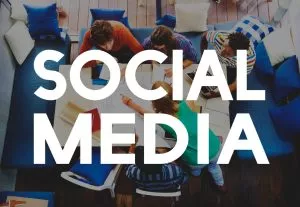
The evolution of social media: from the first platforms to modern technologies
Today, social networks are far more than just communication tools. They have transformed into global platforms connecting billions of people worldwide, reshaping not only communication but also business environments, societal processes, and even cultural values. The history of their development is a series of fascinating stages, from early experimental platforms to the digital giants that set trends for the future. This article delves into the evolution of social media, its impact on the modern world, and the future prospects it promises.
Early beginnings: the origins of social media
The first attempts to create social platforms date back to the late 1990s. Six Degrees, launched in 1997, was one of the earliest networks where users could create profiles, add friends, and view connections. The platform’s name referred to the “six degrees of separation” theory, which suggests that every person is connected to any other through six or fewer social links. Although Six Degrees did not gain significant popularity, it laid the groundwork for future concepts.
Key aspects of early social networks included:
- profile creation, a novel format at the time;
- forming user connections by adding friends;
- displaying connections, allowing users to see friends of friends.
In the 2000s, new projects emerged, like Friendster and MySpace. Friendster quickly gained popularity in Southeast Asia, while MySpace appealed to younger users with its music integration and customizable profiles.
The Facebook revolution
Facebook, launched by Mark Zuckerberg in 2004, marked a turning point in the history of social media. Initially available only to Harvard students, it later opened to the public. Facebook differed in that it required real names, creating a sense of security and authenticity.
Facebook’s essential features—such as the wall for posts, likes, groups, and community pages—made the platform universally appealing to users of all ages. By 2012, Facebook reached one billion active users monthly, becoming the first platform to achieve such a massive audience.
New formats: Twitter and Instagram
As social media’s popularity grew in the 2010s, platforms with new formats emerged. Twitter, launched in 2006, allowed users to share short messages, or “tweets,” of up to 140 characters, which quickly became popular among politicians, celebrities, and journalists.
Instagram, which started in 2010, shifted focus to visual content, allowing users to share photos and short videos. The platform later integrated features like photo filters and Stories, giving users more ways to express themselves.
How Twitter and Instagram differed from previous networks:
- Twitter allowed fast, real-time sharing of thoughts and news;
- Instagram emphasized visual communication through photos and videos, especially appealing to younger audiences.
These networks introduced new communication formats, changing information sharing approaches and distinguishing themselves from earlier social media.
Modern platforms: Snapchat and TikTok
At the current stage, social networks offer even more options for interaction and self-expression. Snapchat, launched in 2011, popularized the disappearing message format, which became trendy among younger users.
In 2016, TikTok entered the market, focusing on short videos with musical accompaniment. The platform quickly gained popularity for its creativity options and global trend-setting. TikTok became a favorite among young people with video editing tools, diverse effects, and music integration.
Interesting facts about social media
Social media constantly evolves, presenting new features and innovations that impact millions worldwide. Here are a few intriguing facts highlighting its broad scale and influence:
- Facebook became the first social media platform to reach one billion active users.
- In response to Snapchat’s popularity, Instagram introduced Stories in 2016, allowing users to share photos and videos that disappear after 24 hours.
- WeChat, China’s most popular social platform, combines messaging, social networking, and payment functions.
These facts underscore the significance of social platforms in the modern world and their ability to adapt to new challenges and user needs. With technological advances, we can expect further innovations to transform the social media landscape.
The impact of Web 3.0 on social media
With the arrival of Web 3.0, we stand on the threshold of a new era in social media, emphasizing decentralization, data security, and user control over personal information. This new web space promises to rewrite the rules, opening new opportunities for users and developers alike.
Decentralization as the new standard
One of Web 3.0’s key features is decentralization, meaning data is not stored on centralized servers but distributed among users. This shift can transform the structure of social networks, reducing reliance on large corporations. Users gain control over their data, deciding who can access it and how it can be used. Imagine a social network where you are not just a user but the owner of your information!
A new understanding of digital identity
Web 3.0 also promises to reshape our perception of digital identity. Instead of creating numerous accounts on different platforms, we could have a single decentralized digital identity storing our data securely. This change would simplify registration processes and allow users to manage how their data interacts with various services.
Privacy and security
Data security in Web 3.0 becomes even more critical. Growing concerns about information leaks and data misuse require new solutions. Decentralized platforms offer high levels of encryption and anonymity, allowing users to feel safe. Future social networks may become spaces where privacy is not only valued but is an integral part of the user experience.
The future of social media: new technologies and challenges
Social media continues to develop rapidly, and the future promises even more innovation. Platforms are expanding their capabilities by leveraging emerging technologies, such as virtual reality (VR) and artificial intelligence (AI). Companies are also focusing on improving user privacy and data protection.
Future trends:
- Metaverse: Meta (formerly Facebook) is working on creating a virtual world for social interaction.
- AI and Personalization: Algorithms are improving to ensure more accurate content recommendations.
- Environmental Responsibility: Reducing resource use and optimizing servers.
Beyond these trends, the future of social media will also require attention to ethical content issues, combating misinformation, and creating healthier online communities. As new technologies emerge, it’s essential to ensure users receive not only personalized but also reliable content. Additionally, the integration of new features may increase social media dependency, calling for mechanisms to support users’ mental well-being and encourage responsible platform usage.
Conclusion
The history of social media development is a dynamic process that continues to transform the digital world and impact all aspects of our lives. Today’s platforms are more than just communication tools—they shape culture, disseminate information, and set trends. The future of social networks will be linked to integrating cutting-edge technology, ensuring data security, and creating innovative opportunities for users in the digital space.











